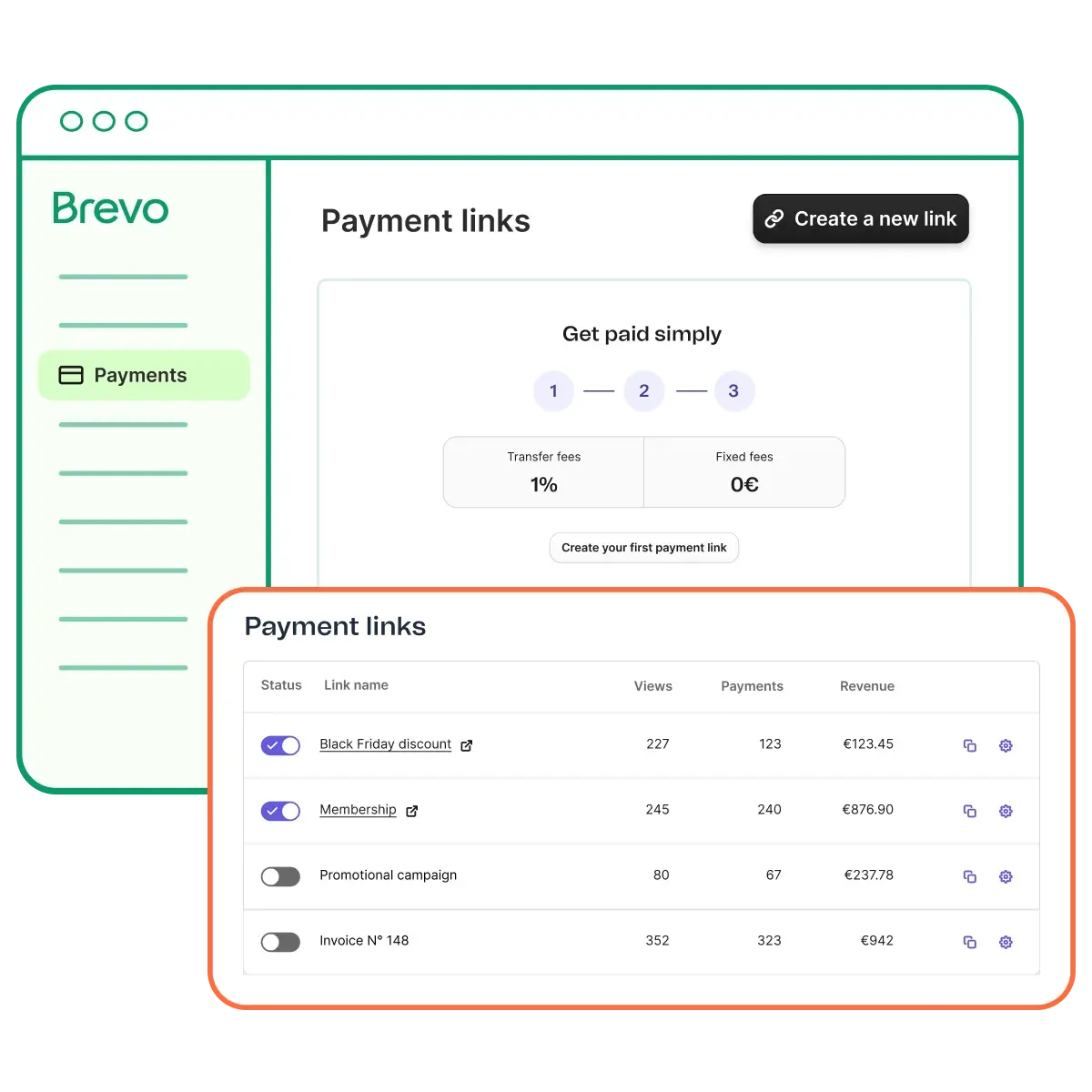SALES PLATFORM
Get paid easier with
Brevo Payments
Quick and easy setup
Start receiving client payments in minutes — zero coding required.
Unbeatable pricing
Accept money without paying extra. We only charge 1% commission — no fixed fees.
All data in one place
Gather payment history and marketing data in one place to better segment your customers.
Explore our other products
See all




